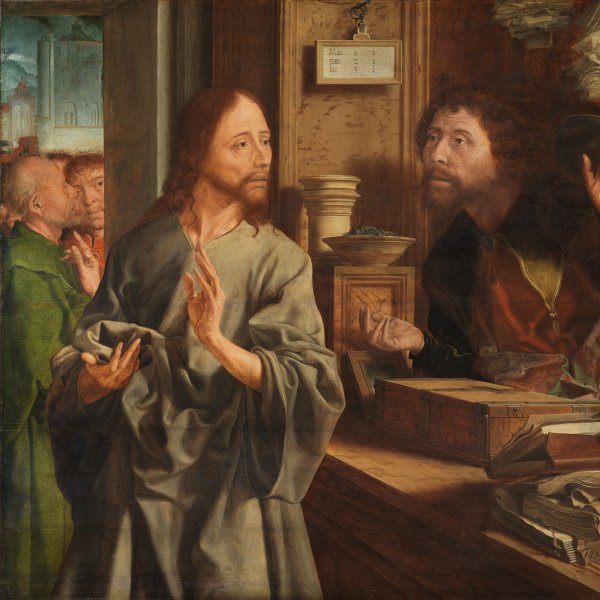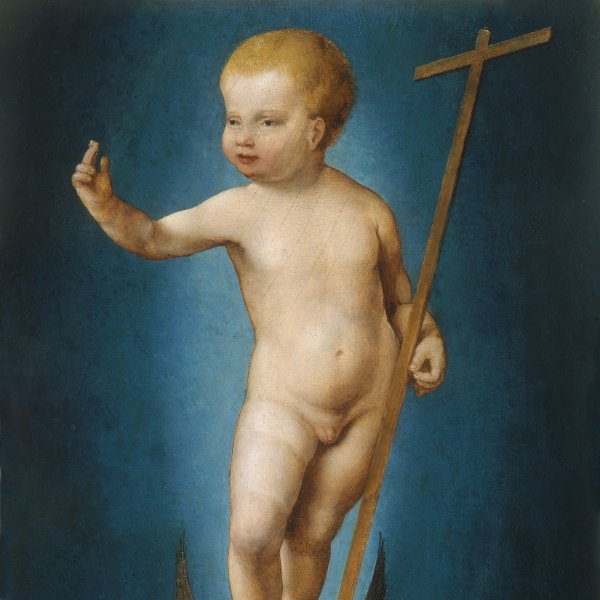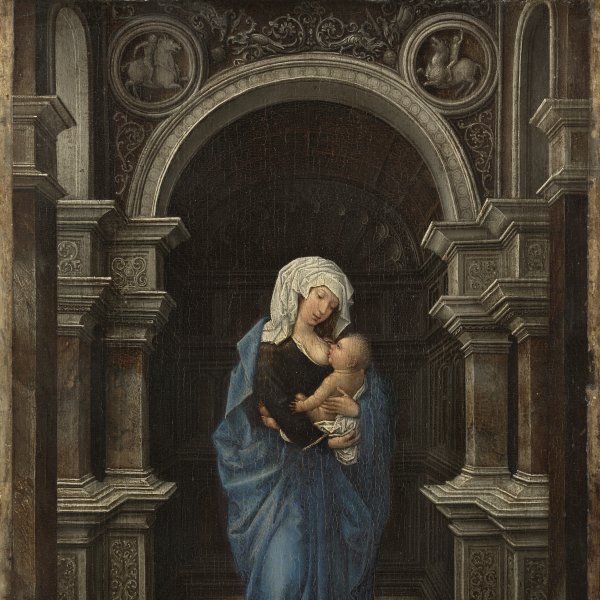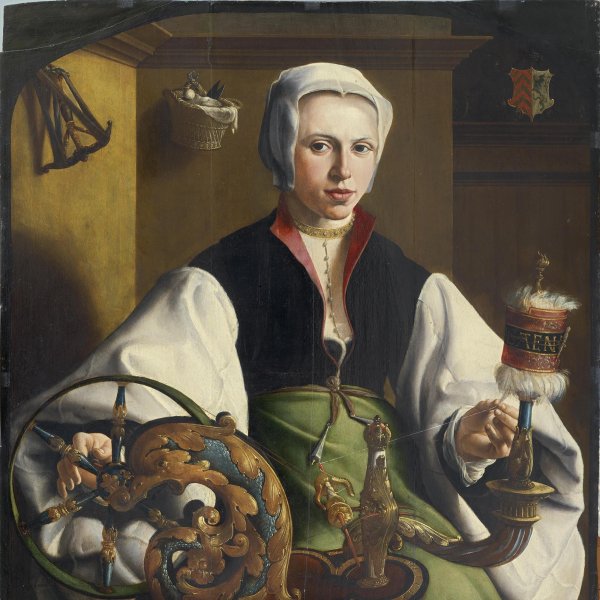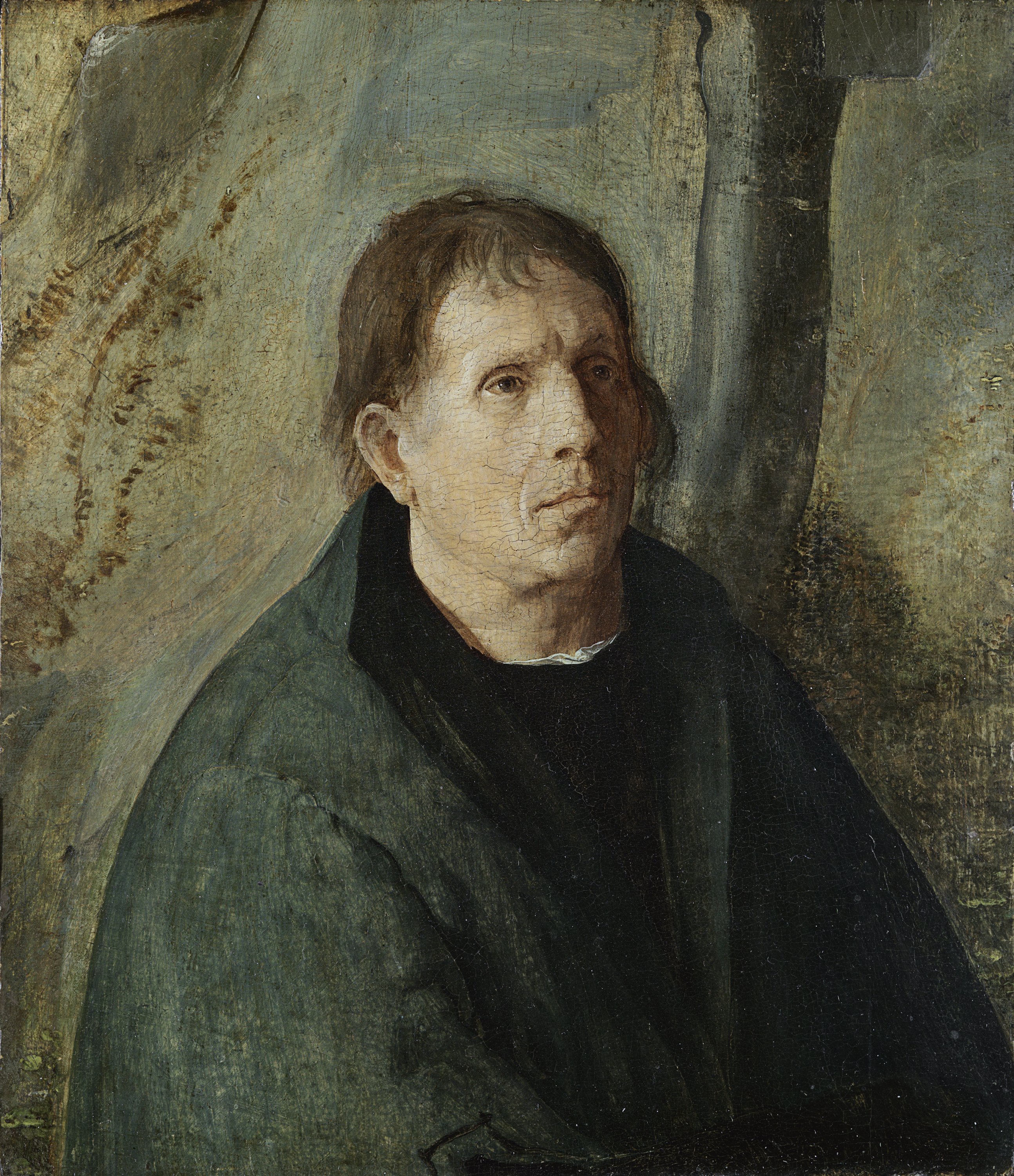Portrait of a Donor
Aertgen van Leyden, also known as Aert Claesz., was a Netherlandish painter active in the first half of the 16th century. His style combines the influences of the leading painters of the day such as Jan Wellens de Cock, Jan van Scorel and Hans Baldung Grien, among others. Due to the varied nature of his output and the different styles that he employed, the attribution and dating of his works has proved complex. The present portrait has been identified as a fragment of The Temptations of Saint Anthony in the Musée Royaux des Beaux-Arts, Brussels, as the truncated fingers of one of the hands connect to those of the donor in the present work, according to Boon. There are also similarities between the backgrounds of the two paintings, the chromatic range, the false inscription with the letter “L”, and the date “1511” to be seen on the two paintings.
This small portrait entered the Thyssen-Bornemisza collection in 1930 and was included in the exhibition at the Neue Pinakothek in Munich, where it was attributed to Lucas van Leyden. In 1958 Boon proposed an attribution to Aertgen van Leyden, and this attribution has appeared in the Collection’s catalogues since 1969. Little is known of this artist’s life and work although research in the last century has produced some information. His name appears in the Leiden records between 1521 and 1564. According to Karel van Mander he first trained with Cornelis Engebrechtsz. rather than with his father. Van Mander mentions the changes in the artist’s style that reflect the influence of other painters including Jan van Scorel and Maerten van Heemskerck. It would seem that he was a fine draughtsman whose designs were used by other artists. His only securely attributed composition is the triptych of The Last Judgement in the Musée des Beaux-Arts in Valenciennes, which is included in Van Mander’s list of his works. Using this work as a reference point, art historians have reconstructed an oeuvre of drawings and paintings. They include the paintings of The Sermon of the early 1530s in the Rijksmuseum, Amsterdam, and The Resurrection of Lazarus in the same museum but painted in a different style.
According to Boon the present panel is a fragment of The Temptations of Saint Anthony, a work now in the Musée Royaux des Beaux-Arts in Brussels. When that work was cleaned the fingers of a hand appeared on the left side that Boon considered to belong to the present figure. Both paintings also have a comparable landscape that continues in the Brussels panel, and use a similar colour range and technique. In addition, the figures are on the same scale. Both panels also have a false inscription with the letter “L” and the date “1511”. Bruyn suggested that The Temptations of Saint Anthony, the present panel and the above-mentioned painting of The Sermon in the Rijksmuseum were part of a single composition, an idea rejected by Boon. A drawing in the Prentenkabinet der Rijksuniversitat in Leiden of The Temptation and Death of Saint Anthony has been related to the Brussels panel.
In 1902 the present panel was in the collection of August Zeiss in Berlin. It was shown for the first time that year in an exhibition on Flemish Primitives at the Hotel Gruuthuse in Bruges. A year later it was recorded in the literature for the first time by Friedländer.
Mar Borobia





